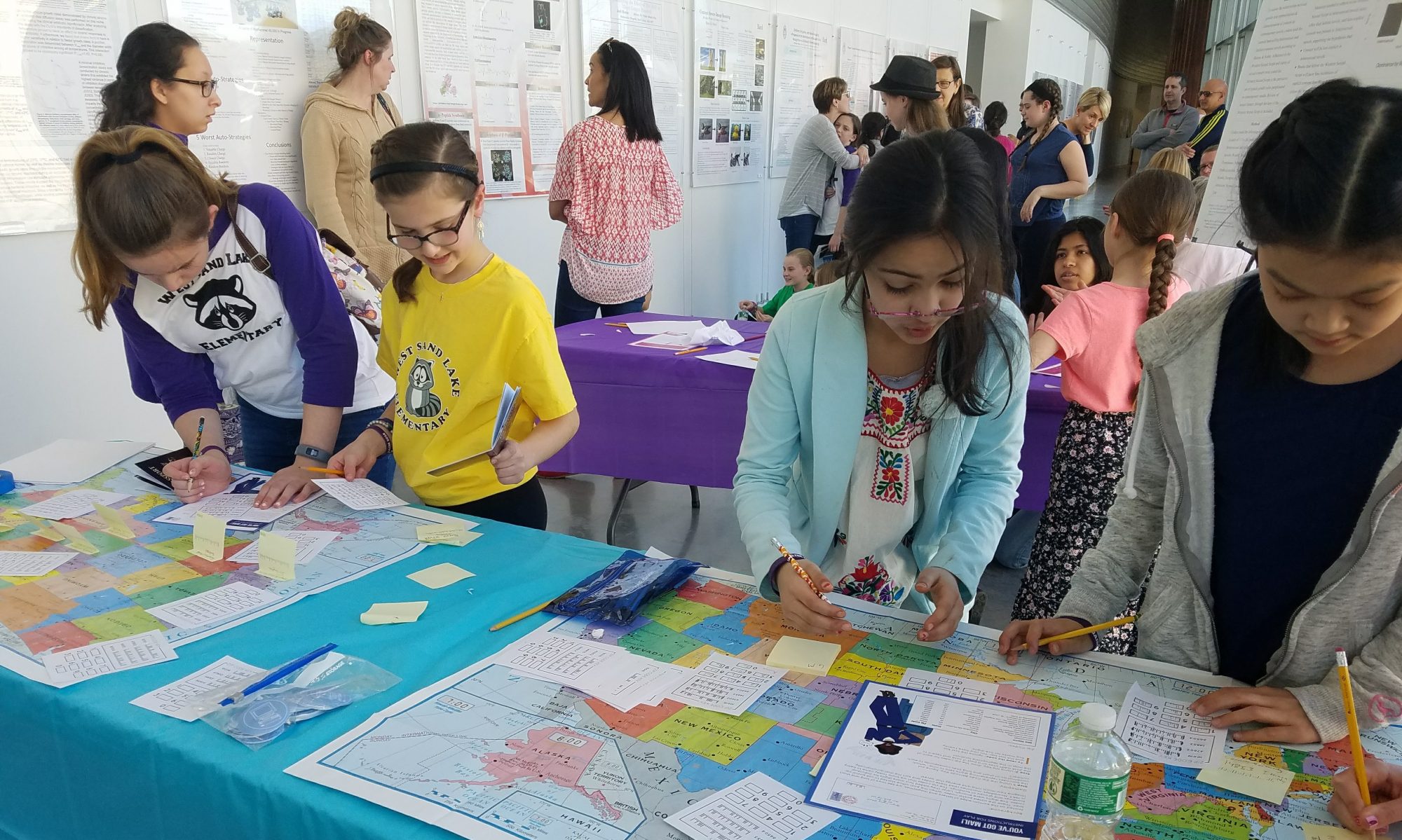We have officially reached the end of Bard Math CAMP 2025! This week has really flown by, occupied by great fun as well as great math. Students enter the lobby and make their way to morning activities to pass time as they wait for their last math class of the week.





The Sine group starts by exploring a grid, noticing how to get from one intersection point to another, recognizing a pattern and making it easy to traverse from “Point A” to “Point B”. They discover Pascal’s Triangle within the pattern!
CAMPers then use exactly three Cuisenaire Rods to see how many different trains could be made for a set of sequential numbers. The CAMPers collaboratively fill out a data table on the board, taking turns each adding a component. They discuss patterns between length and number of trains. CAMPers see how “choosing” played a role in finding the numbers and the “magical” appearance of the triangular numbers.
Class ends with CAMPers having the opportunity to create even more trains, with each group getting a different criteria. Unfortunately, time runs out to finish this activity- but with enough information to continue on their own!












The Cosine group starts class going over the methods of solving the train problem they were given yesterday, counting the number of trains of a certain length, composed of a certain number of cars. CAMPers are then tasked with explaining what those lengths mean in the context of a formula that one CAMPer conjectured: The number of trains of length n made from k cars is just (n-1) choose (k-1)!
They use blocks to create a visual representation of the trains in the problem and are challenged to use these visuals to investigate correlations between the numbers in the problem and triangular numbers. Class ends with CAMPers visiting each others tables, taking turns explaining patterns and thought processes to solve the problem.
CAMPers then move on to their second class of the day with the Cotangent group heading to art and the Tangent group going to computer science.
In art, using the vanishing point and perspective concepts that they learned earlier this week combined with their shading practice yesterday, CAMPers make optical illusion-like doodles! They create squiggly oceans, descending rabbit holes, colorful patterns, and so much more.






In computer science, the Tangent group starts by collaboratively completing the Towers of Hanoi. Each CAMPer is assigned a disk and is responsible for said disk and the one above it. The goal is to discover a pattern of behavior that will be translated into a recursive algorithm!
The CAMPers then use the driver-navigator partner system to write a code that efficiently solves the Towers of Hanoi using the patterns they explored and their newfound understanding of recursive functions.




CAMPers break for lunch, enjoying the beautiful weather! Skipping our elective period, once CAMPers are done with lunch, they head straight to their third class of the day. The Cotangent group goes to computer science while the Tangent group heads to art to have their turn in creating and designing optical illusions.










In computer science the Cotangent group gets a new challenge to work on! Some are continuing work on logic problems like determining whether inputs are positive or negative. Others use the driver-navigator partner system to create a function that doesn’t use loops, but finds the factorial of a number and test their thought processes in this.
When CAMPers finish this challenge, they are given the same Tower of Hanoi problem that was given to the Tangent group. They work to figure out a pattern so they can create a function that will demonstrate it, and solve this puzzle.
After their last class at Bard Math CAMP, CAMPers take a survey asking their opinions on the time they spent here. They trade their survey in for their CAMP t-shirt! All CAMPers walk to the RKC building to take a photo together. Once back, everyone sets up and gets ready to show their parents everything they’ve worked on this week during open house.


We have officially reached the end of Bard Math CAMP 2025! We hope that all CAMPers were able to learn something new and will continue exploring any curiosities outside of CAMP. It is such a joy to see so many CAMPers grow intellectually while having so much fun doing math!
This week went by so fast! Although we hate to see this week go, saying goodbye means enthusiasm for next year just grows, as more ideas for what to do next continues to form!
Photo credits: Featured image- Bard student on campus, 1-39- Sabine Harvey








































































































































































































































